US House of Representative hearing that incited 9/11 false flag and US wars of terror.
Heinous Crimes, World news Sunday, July 22nd, 2012
The following FEBRUARY 12, 1998 US House of Representative hearing proves a US intent to launch illegal wars of aggression and terror against Afghanistan, Iraq, Libya, Syria and Iran, years before 9/11. The US government immediately planned for, prepared for, initiated and waged a war of aggression against Afghanistan in violation of international treaties, agreements or assurances, after the following HOUSE COMMITTEE ON INTERNATIONAL RELATIONS hearing. NATO member countries are also guilty of this crime as they are willing participants and co-conspirators in these wars of aggression against the sovereign states of Afghanistan, Iraq, and Libya and US mercenary wars of terror in Libya and Syria.
The complete text of the hearing can be found at the following link: http://commdocs.house.gov/committees/intlrel/hfa48119.000/hfa48119_0.HTM#2. We begin this report with page 30 of the hearing.
TESTIMONY
BY
JOHN J. MARESCA
VICE PRESIDENT, INTERNATIONAL RELATIONS
UNOCAL CORPORATION
TO
HOUSE COMMITTEE ON INTERNATIONAL RELATIONS
SUBCOMMITTEE ON ASIA AND THE PACIFIC
FEBRUARY 12, 1998
WASHINGTON, D.C.
Mr. Chairman, I am John Maresca, Vice President, International Relations, of Unocal Corporation.
Unocal is one of the world’s leading energy resource and project development companies. Our activities are focused on three major regions — Asia, Latin America and the U.S. Gulf of Mexico. In Asia and the U.S. Gulf of Mexico, we are a major oil and gas producer. I appreciate your invitation to speak here today. I believe these hearings are important and timely, and I congratulate you for focusing on Central Asia oil and gas reserves and the role they play in shaping U.S. policy.
Today we would like to focus on three issues concerning this region, its resources and U.S. policy:
The need for multiple pipeline routes for Central Asian oil and gas.
The need for U.S. support for international and regional efforts to achieve balanced and lasting political settlements within Russia, other newly independent states and in Afghanistan.
The need for structured assistance to encourage economic reforms and the development of appropriate investment climates in the region. In this regard, we specifically support repeal or removal of Section 907 of the Freedom Support Act.
For more than 2,000 years, Central Asia has been a meeting ground between Europe and Asia, the site of ancient east-west trade routes collectively called the Silk Road and, at various points in history, a cradle of scholarship, culture and power. It is also a region of truly enormous natural resources, which are revitalizing cross-border trade, creating positive political interaction and stimulating regional cooperation. These resources have the potential to recharge the economies of neighboring countries and put entire regions on the road to prosperity.
About 100 years ago, the international oil industry was born in the Caspian/Central Asian region with the discovery of oil. In the intervening years, under Soviet rule, the existence of the region’s oil and gas resources was generally known, but only partially or poorly developed.
As we near the end of the 20th century, history brings us full circle. With political barriers falling, Central Asia and the Caspian are once again attracting people from around the globe who are seeking ways to develop and deliver its bountiful energy resources to the markets of the world.
The Caspian region contains tremendous untapped hydrocarbon reserves, much of them located in the Caspian Sea basin itself. Proven natural gas reserves within Azerbaijan, Uzbekistan, Turkmenistan and Kazakhstan equal more than 236 trillion cubic feet. The region’s total oil reserves may reach more than 60 billion barrels of oil — enough to service Europe’s oil needs for 11 years. Some estimates are as high as 200 billion barrels. In 1995, the region was producing only 870,000 barrels per day (44 million tons per year [Mt/y]).
By 2010, Western companies could increase production to about 4.5 million barrels a day (Mb/d) — an increase of more than 500 percent in only 15 years. If this occurs, the region would represent about five percent of the world’s total oil production, and almost 20 percent of oil produced among non-OPEC countries.
One major problem has yet to be resolved: how to get the region’s vast energy resources to the markets where they are needed. There are few, if any, other areas of the world where there can be such a dramatic increase in the supply of oil and gas to the world market. The solution seems simple: build a “new” Silk Road. Implementing this solution, however, is far from simple. The risks are high, but so are the rewards.
Finding and Building Routes to World Markets
One of the main problems is that Central Asia is isolated. The region is bounded on the north by the Arctic Circle, on the east and west by vast land distances, and on the south by a series of natural obstacles — mountains and seas — as well as political obstacles, such as conflict zones or sanctioned countries.
This means that the area’s natural resources are landlocked, both geographically and politically. Each of the countries in the Caucasus and Central Asia faces difficult political challenges. Some have unsettled wars or latent conflicts. Others have evolving systems where the laws — and even the courts — are dynamic and changing. Business commitments can be rescinded without warning, or they can be displaced by new geopolitical realities.
In addition, a chief technical obstacle we face in transporting oil is the region’s existing pipeline infrastructure. Because the region’s pipelines were constructed during the Moscow-centered Soviet period, they tend to head north and west toward Russia. There are no connections to the south and east.
Depending wholly on this infrastructure to export Central Asia oil is not practical. Russia currently is unlikely to absorb large new quantities of “foreign” oil, is unlikely to be a significant market for energy in the next decade, and lacks the capacity to deliver it to other markets.
Certainly there is no easy way out of Central Asia. If there are to be other routes, in other directions, they must be built.
Two major energy infrastructure projects are seeking to meet this challenge. One, under the aegis of the Caspian Pipeline Consortium, or CPC, plans to build a pipeline west from the Northern Caspian to the Russian Black Sea port of Novorossisk. From Novorossisk, oil from this line would be transported by tanker through the Bosphorus to the Mediterranean and world markets.
The other project is sponsored by the Azerbaijan International Operating Company (AIOC), a consortium of 11 foreign oil companies including four American companies — Unocal, Amoco, Exxon and Pennzoil. It will follow one or both of two routes west from Baku. One line will angle north and cross the North Caucasus to Novorossisk. The other route would cross Georgia and extend to a shipping terminal on the Black Sea port of Supsa. This second route may be extended west and south across Turkey to the Mediterranean port of Ceyhan.
But even if both pipelines were built, they would not have enough total capacity to transport all the oil expected to flow from the region in the future; nor would they have the capability to move it to the right markets. Other export pipelines must be built.
Unocal believes that the central factor in planning these pipelines should be the location of the future energy markets that are most likely to need these new supplies. Just as Central Asia was the meeting ground between Europe and Asia in centuries past, it is again in a unique position to potentially service markets in both of these regions — if export routes to these markets can be built. Let’s take a look at some of the potential markets.
Western Europe
Western Europe is a tough market. It is characterized by high prices for oil products, an aging population, and increasing competition from natural gas. Between 1995 and 2010, we estimate that demand for oil will increase from 14.1 Mb/d (705 Mt/y) to 15.0 Mb/d (750 Mt/y), an average growth rate of only 0.5 percent annually. Furthermore, the region is already amply supplied from fields in the Middle East, North Sea, Scandinavia and Russia. Although there is perhaps room for some of Central Asia’s oil, the Western European market is unlikely to be able to absorb all of the production from the Caspian region.
Central and Eastern Europe
Central and Eastern Europe markets do not look any better. Although there is increased demand for oil in the region’s transport sector, natural gas is gaining strength as a competitor. Between 1995 and 2010, demand for oil is expected to increase by only half a million barrels per day, from 1.3 Mb/d (67 Mt/y) to 1.8 Mb/d (91.5 Mt/y). Like Western Europe, this market is also very competitive. In addition to supplies of oil from the North Sea, Africa and the Middle East, Russia supplies the majority of the oil to this region.
The Domestic NIS Market
The growth in demand for oil also will be weak in the Newly Independent States (NIS). We expect Russian and other NIS markets to increase demand by only 1.2 percent annually between 1997 and 2010.
Asia/Pacific
In stark contrast to the other three markets, the Asia/Pacific region has a rapidly increasing demand for oil and an expected significant increase in population. Prior to the recent turbulence in the various Asian/Pacific economies, we anticipated that this region’s demand for oil would almost double by 2010. Although the short-term increase in demand will probably not meet these expectations, Unocal stands behind its long-term estimates.
Energy demand growth will remain strong for one key reason: the region’s population is expected to grow by 700 million people by 2010.
It is in everyone’s interests that there be adequate supplies for Asia’s increasing energy requirements. If Asia’s energy needs are not satisfied, they will simply put pressure on all world markets, driving prices upwards everywhere.
The key question is how the energy resources of Central Asia can be made available to satisfy the energy needs of nearby Asian markets. There are two possible solutions — with several variations.
Export Routes
East to China: Prohibitively Long?
One option is to go east across China. But this would mean constructing a pipeline of more than 3,000 kilometers to central China — as well as a 2,000-kilometer connection to reach the main population centers along the coast. Even with these formidable challenges, China National Petroleum Corporation is considering building a pipeline east from Kazakhstan to Chinese markets.
Unocal had a team in Beijing just last week for consultations with the Chinese. Given China’s long-range outlook and its ability to concentrate resources to meet its own needs, China is almost certain to build such a line. The question is what will the costs of transporting oil through this pipeline be and what netback will the producers receive.
South to the Indian Ocean: A Shorter Distance to Growing Markets
A second option is to build a pipeline south from Central Asia to the Indian Ocean.
One obvious potential route south would be across Iran. However, this option is foreclosed for American companies because of U.S. sanctions legislation. The only other possible route option is across Afghanistan, which has its own unique challenges.
The country has been involved in bitter warfare for almost two decades. The territory across which the pipeline would extend is controlled by the Taliban, an Islamic movement that is not recognized as a government by most other nations. From the outset, we have made it clear that construction of our proposed pipeline cannot begin until a recognized government is in place that has the confidence of governments, lenders and our company.
In spite of this, a route through Afghanistan appears to be the best option with the fewest technical obstacles. It is the shortest route to the sea and has relatively favorable terrain for a pipeline. The route through Afghanistan is the one that would bring Central Asian oil closest to Asian markets and thus would be the cheapest in terms of transporting the oil.
Unocal envisions the creation of a Central Asian Oil Pipeline Consortium. The pipeline would become an integral part of a regional oil pipeline system that will utilize and gather oil from existing pipeline infrastructure in Turkmenistan, Uzbekistan, Kazakhstan and Russia.
The 1,040-mile-long oil pipeline would begin near the town of Chardzhou, in northern Turkmenistan, and extend southeasterly through Afghanistan to an export terminal that would be constructed on the Pakistan coast on the Arabian Sea. Only about 440 miles of the pipeline would be in Afghanistan.
This 42-inch-diameter pipeline will have a shipping capacity of one million barrels of oil per day. Estimated cost of the project — which is similar in scope to the Trans Alaska Pipeline — is about US$2.5 billion.
There is considerable international and regional political interest in this pipeline. Asian crude oil importers, particularly from Japan, are looking to Central Asia and the Caspian as a new strategic source of supply to satisfy their desire for resource diversity. The pipeline benefits Central Asian countries because it would allow them to sell their oil in expanding and highly prospective hard currency markets. The pipeline would benefit Afghanistan, which would receive revenues from transport tariffs, and would promote stability and encourage trade and economic development. Although Unocal has not negotiated with any one group, and does not favor any group, we have had contacts with and briefings for all of them. We know that the different factions in Afghanistan understand the importance of the pipeline project for their country, and have expressed their support of it.
A recent study for the World Bank states that the proposed pipeline from Central Asia across Afghanistan and Pakistan to the Arabian Sea would provide more favorable netbacks to oil producers through access to higher value markets than those currently being accessed through the traditional Baltic and Black Sea export routes.
This is evidenced by the netback values producers will receive as determined by the World Bank study. For West Siberian crude, the netback value will increase by nearly $2.00 per barrel by going south to Asia. For a producer in western Kazakhstan, the netback value will increase by more than $1 per barrel by going south to Asia as compared to west to the Mediterranean via the Black Sea.
Natural Gas Export
Given the plentiful natural gas supplies of Central Asia, our aim is to link a specific natural resource with the nearest viable market. This is basic for the commercial viability of any gas project. As with all projects being considered in this region, the following projects face geo-political challenges, as well as market issues.
Unocal and the Turkish company, Koc Holding A.S., are interested in bringing competitive gas supplies to the Turkey market. The proposed Eurasia Natural Gas Pipeline would transport gas from Turkmenistan directly across the Caspian Sea through Azerbaijan and Georgia to Turkey. Sixty percent of this proposed gas pipeline would follow the same route as the oil pipeline proposed to run from Baku to Ceyhan. Of course, the demarcation of the Caspian remains an issue.
Last October, the Central Asia Pipeline, Ltd. (CentGas) consortium, in which Unocal holds an interest, was formed to develop a gas pipeline that will link Turkmenistan’s vast natural gas reserves in the Dauletabad Field with markets in Pakistan and possibly India. An independent evaluation shows that the field’s resources are adequate for the project’s needs, assuming production rates rising over time to 2 billion cubic feet of gas per day for 30 years or more.
In production since 1983, the Dauletabad Field’s natural gas has been delivered north via Uzbekistan, Kazakhstan and Russia to markets in the Caspian and Black Sea areas. The proposed 790-mile pipeline will open up new markets for this gas, travelling from Turkmenistan through Afghanistan to Multan, Pakistan. A proposed extension would link with the existing Sui pipeline system, moving gas to near New Delhi, where it would connect with the existing HBJ pipeline. By serving these additional volumes, the extension would enhance the economics of the project, leading to overall reductions in delivered natural gas costs for all users and better margins. As currently planned, the CentGas pipeline would cost approximately $2 billion. A 400-mile extension into India could add $600 million to the overall project cost.
As with the proposed Central Asia Oil Pipeline, CentGas cannot begin construction until an internationally recognized Afghanistan government is in place. For the project to advance, it must have international financing, government-to-government agreements and government-to-consortium agreements.
******************************************
US, Canada, and other NATO member heads of states guilty of war crimes
A war of aggression is a military conflict waged absent the justification of self-defense. Waging such a war of aggression is a crime under the customary international law.
The International Military Tribunal at Nuremberg, which followed World War II, called the waging of aggressive war “essentially an evil thing…to initiate a war of aggression…is not only an international crime; it is the supreme international crime, differing only from other war crimes in that it contains within itself the accumulated evil of the whole.” ~ chief American prosecutor, Robert H. Jackson
The Rome Statute of the International Criminal Court refers to the crime of aggression as one of the “most serious crimes of concern to the international community”, and provides that the crime falls within the jurisdiction of the International Criminal Court (ICC).
In 1950, the Nuremberg Tribunal defined Crimes against Peace, in Principle 6, specifically Principle VI(a), submitted to the United Nations General Assembly, as:
(i) Planning, preparation, initiation or waging of a war of aggression or a war in violation of international treaties, agreements or assurances;
(ii) Participation in a common plan or conspiracy for the accomplishment of any of the acts mentioned under (i).
US, Canadian, and other NATO member heads of states immediately planned for, prepared for, initiated and waged wars of aggression against Afghanistan, Iraq, Libya, Syria and Iran in violation of international treaties, agreements or assurances, after the FEBRUARY 12, 1998 HOUSE COMMITTEE ON INTERNATIONAL RELATIONS hearing. NATO member heads of state are guilty of war crime as they willing participated and co-conspired in these wars of aggression.
It is for this reason that both parties of the US government will never try George W Bush, Dick Cheney, Donald Rumsfeld, Bill Gates or alias Barack Hussein Obama for; crimes against peace, war crimes orcrimes against humanity. The entire US government is guilty of these heinous crimes. Both parties have and continue to conspire to commit wars of aggression. The false flag attack against the US on September 11, 2001 was planned for and prepared for by the Bill and Hillary Clinton Democratic government and carried out by George W Bush and Dick Cheney Republican government.
The treasonous acts of terror against the US and its people on 9/11 was the pretext used by the US government to start their illegal wars of terror against oil and gas rich nations. 9/11 was the US government’s Reichstag fire. The Patriot Act was drafted prior to 9/11 mimicking the Nazi German Enabling Act – giving the president of the United States dictatorial powers over the US people and establishing a Nazi Gestapo (Homeland) security force in the US.
Short URL: https://presscore.ca/news/?p=6812

 The Halifax International Security Forum was founded in 2009 as a propaganda program within the German Marshall Fund (founded June 5, 1972 by West German Chancellor Willy Brandt) by the Crown in Canada using Crown Corp ACOA & DND funds. The Halifax International Security Forum is a front that is used to recruit top US, UK and Canadian gov and military officials as double agents for Canada's WWI, WWII enemy and wage new Vatican Germany Cold War.
High Treason: s.46 (1) Every one commits high treason who, in Canada (c) assists an enemy at war with Canada, ..., whether or not a state of war exists". Every one who, in Canada assists Canada's enemies wage "piecemeal WWIII" Cold War by organizing, funding and participating in the Germany government politically and militarily benefitting / lead Halifax International Security Forum is committing high treason.
The Halifax International Security Forum was founded in 2009 as a propaganda program within the German Marshall Fund (founded June 5, 1972 by West German Chancellor Willy Brandt) by the Crown in Canada using Crown Corp ACOA & DND funds. The Halifax International Security Forum is a front that is used to recruit top US, UK and Canadian gov and military officials as double agents for Canada's WWI, WWII enemy and wage new Vatican Germany Cold War.
High Treason: s.46 (1) Every one commits high treason who, in Canada (c) assists an enemy at war with Canada, ..., whether or not a state of war exists". Every one who, in Canada assists Canada's enemies wage "piecemeal WWIII" Cold War by organizing, funding and participating in the Germany government politically and militarily benefitting / lead Halifax International Security Forum is committing high treason.
 Please take a moment to sign a petition to
Please take a moment to sign a petition to 











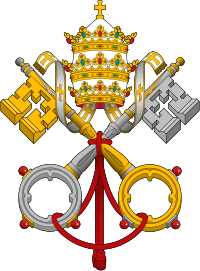






















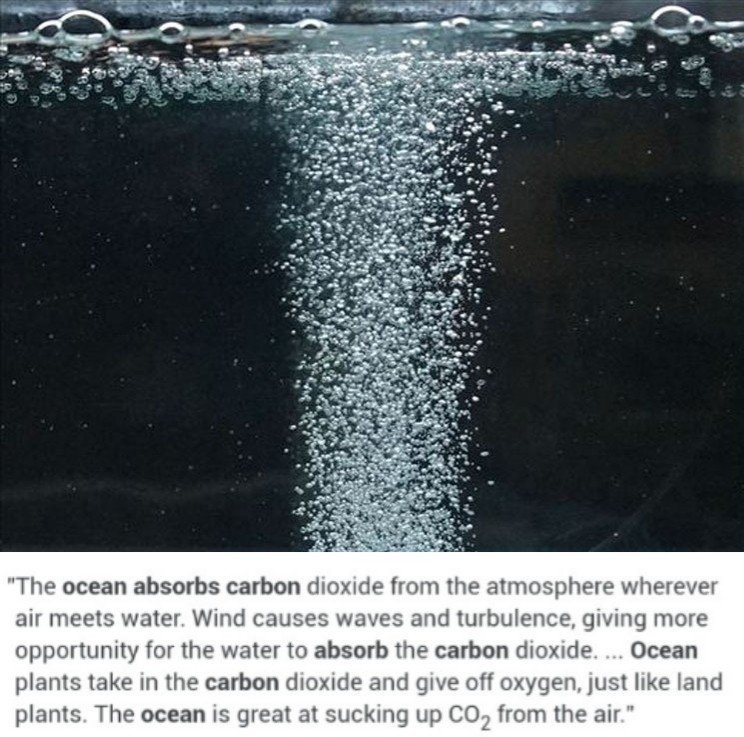





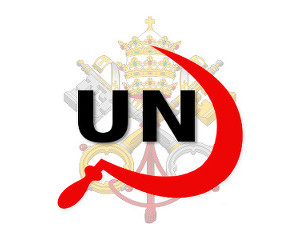
 1917 Code of Canon Law, Canon 185 invalidates (voids) all papacies since October 26, 1958 due to the fact Cardinal Giuseppe Siri was elected Pope on the Third ballot on Oct 26 1958 but the new Pope Gregory XVII was illegally prevented from assuming the office. A Pope was elected on October 26, 1958. Thousands of people witnessed a new Pope being elected by seeing white smoke and millions were informed by Vatican radio broadcasts beginning at 6:00 PM Rome time on October 26, 1958. The papacy of Francis, Benedict, John Paul II, John Paul I, Paul VI, John XXIII and any and all of their respective doctrines, bulls, letter patents and the Second Vatican Council are all invalidated (having no force, binding power, or validity) by Canon 185 because the 1958 conclave of cardinals elected Cardinal Giuseppe Siri Pope on Oct 26 1958. Cardinal Giuseppe Siri accepted the papacy by taking the name Pope Gregory XVII but was illegally prevented from assuming his elected office.. According to Canon 185 Cardinal Angelo Giuseppe Roncalli illegally assumed the papacy 2 days later by fraud and grave fear, unjustly inflicted against Cardinal Giuseppe Siri who was lawfully elected Pope Gregory XVII. Because no Pope has been lawfully elected since October 26, 1958 the Holy See (la Santa Sede/Seat) remains vacant.
1917 Code of Canon Law, Canon 185 invalidates (voids) all papacies since October 26, 1958 due to the fact Cardinal Giuseppe Siri was elected Pope on the Third ballot on Oct 26 1958 but the new Pope Gregory XVII was illegally prevented from assuming the office. A Pope was elected on October 26, 1958. Thousands of people witnessed a new Pope being elected by seeing white smoke and millions were informed by Vatican radio broadcasts beginning at 6:00 PM Rome time on October 26, 1958. The papacy of Francis, Benedict, John Paul II, John Paul I, Paul VI, John XXIII and any and all of their respective doctrines, bulls, letter patents and the Second Vatican Council are all invalidated (having no force, binding power, or validity) by Canon 185 because the 1958 conclave of cardinals elected Cardinal Giuseppe Siri Pope on Oct 26 1958. Cardinal Giuseppe Siri accepted the papacy by taking the name Pope Gregory XVII but was illegally prevented from assuming his elected office.. According to Canon 185 Cardinal Angelo Giuseppe Roncalli illegally assumed the papacy 2 days later by fraud and grave fear, unjustly inflicted against Cardinal Giuseppe Siri who was lawfully elected Pope Gregory XVII. Because no Pope has been lawfully elected since October 26, 1958 the Holy See (la Santa Sede/Seat) remains vacant.
 Hold the Crown (alias for temporal authority of the reigning Pope), the Crown appointed Governor General of Canada David Lloyd Johnston, the Crown's Prime Minister (servant) Stephen Joseph Harper, the Crown's Minister of Justice and Attorney General Peter Gordon MacKay and the Crown's traitorous military RCMP force, accountable for their crimes of treason and high treason against Canada and acts preparatory thereto. The indictment charges that they, on and thereafter the 22nd day of October in the year 2014, at Parliament in the City of Ottawa in the Region of Ontario did, use force and violence, via the staged false flag Exercise Determined Dragon 14, for the purpose of overthrowing and besieging the government of Canada contrary to Section 46 of the Criminal Code. In a society governed by the rule of law, the government and its officials and agents are subject to and held accountable under the law. Sign the online
Hold the Crown (alias for temporal authority of the reigning Pope), the Crown appointed Governor General of Canada David Lloyd Johnston, the Crown's Prime Minister (servant) Stephen Joseph Harper, the Crown's Minister of Justice and Attorney General Peter Gordon MacKay and the Crown's traitorous military RCMP force, accountable for their crimes of treason and high treason against Canada and acts preparatory thereto. The indictment charges that they, on and thereafter the 22nd day of October in the year 2014, at Parliament in the City of Ottawa in the Region of Ontario did, use force and violence, via the staged false flag Exercise Determined Dragon 14, for the purpose of overthrowing and besieging the government of Canada contrary to Section 46 of the Criminal Code. In a society governed by the rule of law, the government and its officials and agents are subject to and held accountable under the law. Sign the online  Two of the most obvious signs of a dictatorship in Canada is traitorous Stephen Harper flying around in a "military aircraft" and using Canadian Special Forces "military" personnel from JTF2 and personnel from the Crown's traitorous martial law "military" RCMP force as his personal bodyguards.
Two of the most obvious signs of a dictatorship in Canada is traitorous Stephen Harper flying around in a "military aircraft" and using Canadian Special Forces "military" personnel from JTF2 and personnel from the Crown's traitorous martial law "military" RCMP force as his personal bodyguards.

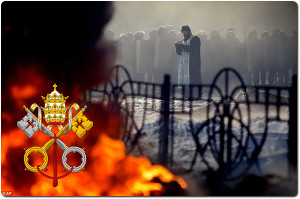
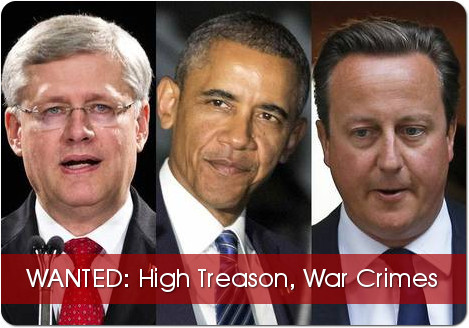













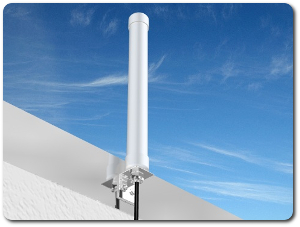
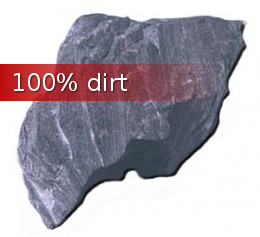
















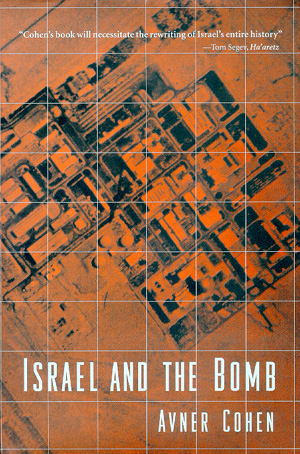


May of 2001 New York Times report titled – “Taliban’s Ban On Poppy A Success, U.S. Aides Say”
“The first American narcotics experts to go to Afghanistan under Taliban rule have concluded that the movement’s ban on opium-poppy cultivation appears to have wiped out the world’s largest crop in less than a year, officials said today.
The American findings confirm earlier reports from the United Nations drug control program that Afghanistan, which supplied about three-quarters of the world’s opium and most of the heroin reaching Europe, had ended poppy planting in one season.”
full story found at http://www.nytimes.com/2001/05/20/world/taliban-s-ban-on-poppy-a-success-us-aides-say.html
2001 UN report on Taliban success in eradicating opium – “Annual Opium Poppy Survey 2001”
“Both the Pre-assessment Survey and the UNDCP Donor Mission observed the near total success of the ban in eliminating poppy cultivation in Taleban controlled areas.”
According to United Nations estimates, Afghanistan now produces an amazing 93 percent of the entire world’s opium. Since the American-led invasion in 2001, and under US /NATO occupation its drug revenues have grown exponentially because US back drug warlords are freely processing opium into heroin.